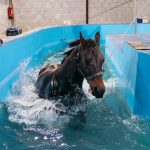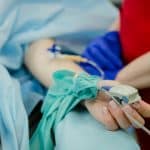Anterior Cruciate Ligament (ACL) injuries are a significant setback for athletes and active individuals worldwide. The ACL, a key ligament in the knee, is often damaged during aggressive sports activities, leading to prolonged periods of rehabilitation and sometimes, surgical reconstruction (ACLR). Isokinetic testing, an insightful method that assesses muscle strength and function, is transforming the healing journey for ACL injuries. While you may have heard of the term, understanding its role and impact in ACL rehabilitation is crucial.
The Role of Isokinetic Testing in ACL Rehabilitation
Isokinetic testing plays a pivotal role in ACL rehabilitation. It’s a specialized form of muscle testing that gauges the maximum strength of a muscle at a constant speed. Incorporating this test into rehabilitation protocols can provide accurate, reliable data to guide your training and recovery journey.
A lire en complément : How Can GPS Technology Optimize Route Planning for Long-Distance Cyclists?
Isokinetic tests measure the strength of the muscle groups surrounding the knee, particularly the quadriceps and hamstrings. These muscles play a crucial role in knee stabilization and movement, hence the need to build their strength post-ACL injury.
These tests are typically performed using an isokinetic dynamometer, a device designed to assess the force exerted by a muscle at different points in its range of motion. By doing so, physiotherapists can develop a comprehensive, personalized rehabilitation program focused on strengthening the affected muscle groups and restoring knee function.
A voir aussi : How Can Pre-Practice Cognitive Exercises Improve Focus in High School Soccer Players?
The Importance of Quadriceps Strength in ACL Rehabilitation
The quadriceps muscle group, located at the front of the thigh, is a primary focus during ACL rehabilitation. Often, after an ACL injury or ACLR, the quadriceps’ strength decreases significantly. This decline can hinder an athlete’s return to sports and increase the risk of re-injury.
Google Scholar studies on ACL rehabilitation highlight the significance of rebuilding quadriceps strength. They emphasize the importance of achieving symmetrical quadriceps strength compared to the uninjured limb to optimize the results of ACLR and reduce the risk of future injuries.
Isokinetic testing provides an accurate measurement of the quadriceps’ strength and gives valuable data that can inform the rehabilitation process. By continually assessing and tracking quadriceps strength, medical professionals can adjust rehabilitation programs to ensure optimal muscle recovery.
How ACL Injury Affects Return to Sports
Returning to sports after an ACL injury or ACLR is a major milestone. However, this return is dependent on successful rehabilitation, including restoring the strength and function of the knee and surrounding muscles. One of the biggest challenges athletes face is regaining the same level of performance they had before the injury.
Isokinetic testing can help navigate this challenge. By assessing muscle strength and function during rehabilitation, professionals can gain a better understanding of an individual’s readiness to return to sports. Regular isokinetic testing throughout the rehabilitation process can provide objective data that can guide decision-making about the timing and approach to reintroducing sports activities.
Med Training Adaptations Using Isokinetic Testing
Med training, or medical training, is a key component of ACL rehabilitation. It involves exercises and therapies designed to restore knee function, improve muscle strength, and prepare the individual for a return to normal activities, including sports.
Isokinetic testing can greatly enhance med training adaptation. It provides a clear, objective assessment of muscle strength and function, enabling healthcare professionals to tailor training programs to meet individual needs and progress. This personalized approach can improve rehabilitation outcomes and speed up the return to sports.
Moreover, regular isokinetic testing can detect any potential issues or setbacks during rehabilitation, allowing for timely interventions to prevent further complications. It fosters a dynamic, responsive approach to med training, ensuring that the rehabilitation program evolves alongside the individual’s recovery.
Isokinetic Testing: An Essential Tool for ACL Rehabilitation
In conclusion, isokinetic testing is an indispensable tool in ACL rehabilitation. By providing accurate, objective data on muscle strength and function, it enables healthcare professionals to tailor rehabilitation programs to individual needs, monitor progress, and guide the return to sports. As research continues to validate its benefits, isokinetic testing is set to become a mainstay in ACL rehabilitation protocols globally.
As we embrace a future where technology and medicine continue to merge, it’s exciting to imagine how developments in isokinetic testing could further revolutionize ACL rehabilitation. The integration of isokinetic testing into rehabilitation protocols is not just a trend but a necessity for optimizing the recovery journey for those with ACL injuries.
The Role of Isokinetic Testing in Return to Sports Post ACL Reconstruction
Returning to sports after an ACL reconstruction is an important goal for many athletes. The speed and success of this transition are significantly influenced by the effectiveness of the rehabilitation process. An essential component of this process is the regular evaluation of post-surgery recovery, and this is where isokinetic testing comes into the equation.
Isokinetic testing can evaluate the strength of the knee during flexion and extension in a controlled, precise manner. The peak torque achieved during these tests gives a clear indicator of muscle strength, particularly the quadriceps, which play a crucial role in knee stabilisation.
Upon performing these assessments, the results are usually compared with the control group (uninjured individuals of similar age, sex and physical activity level). This comparison helps in setting realistic recovery goals and tracking the progress of ACL reconstruction patients.
Moreover, isokinetic testing helps in identifying any potential deficits or imbalances in muscle strength. By integrating this data into the rehabilitation program, physiotherapists can devise targeted exercises to address these specific areas, hence enhancing the overall effectiveness of the program and ensuring a safe return to sports.
Conclusion: Leveraging Isokinetic Testing for Optimized ACL Rehabilitation Outcomes
In the face of an ACL injury, a strategic and well-monitored rehabilitation process is crucial. Isokinetic testing, with its ability to provide accurate, objective data on muscle strength, is a vital tool in this journey.
This diagnostic method facilitates the creation of personalized rehabilitation programs that adapt to the individual’s progress. It not only guides the strengthening of crucial muscle groups, such as the quadriceps, but also provides insights into the individual’s readiness to return to sports – a significant milestone in the recovery journey.
The data obtained from isokinetic testing also allows for early detection of potential issues during rehabilitation. This fosters a responsive approach to ACL rehabilitation and enables timely interventions to prevent further complications.
In conclusion, isokinetic testing is an essential element of ACL rehabilitation. With continuous advancements in technology and medicine, it’s visionary to see how further developments in isokinetic testing can further augment the rehabilitation process. As we move forward, the integration of isokinetic testing into ACL rehabilitation protocols is not just a trend, but a necessity for optimizing rehabilitation outcomes and ensuring a safe return to sports for those affected by ACL injuries.











